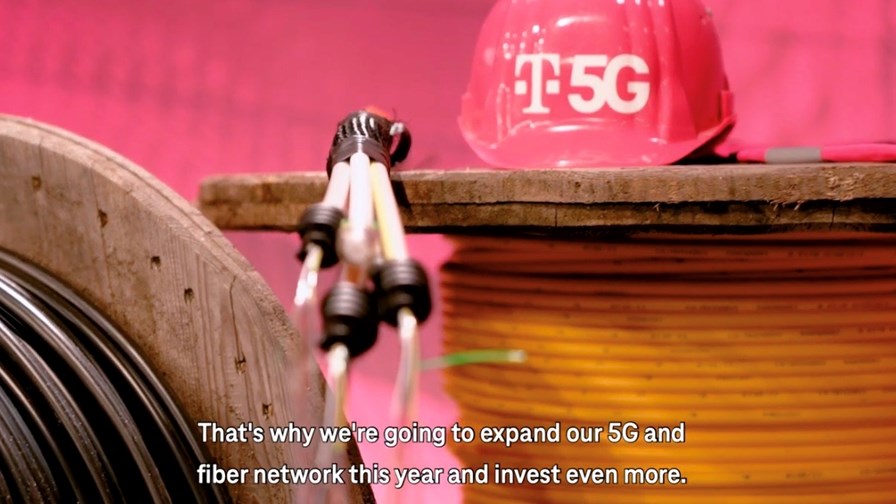
- DT hits financial milestone but its debts pile up
- AT&T finds a TV unit partner
- Brazil’s 5G policy avoids vendor discrimination
Big sales and big debts at Deutsche Telekom, the sidelining of a TV problem child and some rare good news for Huawei take the prime spots in today’s news roundup.
- Deutsche Telekom broke through the 100 billion revenues barrier for the full year thanks to the addition of Sprint’s business to the T-Mobile US operation in 2020. Full year revenues hit €101 billion, up by 29.3%, while adjusted earnings grew by 48% to €10.4 billion. DT noted that even without the addition of Sprint, its revenues grew by 3% like-for-like. But while revenues have increased, so has the operator’s debt pile, which now stands at an enormous €120.2 billion. CEO Timotheus Höttges noted in this short video that DT had invested €17 billion in its networks in 2020 and would invest even more in 2021, with a focus on FTTH and 5G. For the full financial results, see this press release.
- AT&T is spinning off its troubled TV and video services business into a separate company called DIRECTV (or “New DIRECTV”) following a deal with private equity firm TPG Capital. The new company, which is valued at $16.25 billion, and which will be 70% owned by AT&T, comprises the operator’s DIRECTV, AT&T TV and U-verse video services businesses. AT&T announced in its full year financials in January that it was taking a $15.5 billion asset value write-down on DIRECTV, which it acquired in 2015 for $48.5 billion. AT&T says the business had approximately 17.2 million subscribers as of the end of 2020 and generated revenues of more than $28 billion and an operating income of $1.7 billion last year. See this announcement for further details.
- Brazil’s regulator Anatel has unveiled the rules for the country’s 5G spectrum auction and in a rare piece of good news for Huawei, there are no restrictions on the use of Chinese technology to build out resulting 5G networks, reports Reuters. Brazil had previously shown signs of kowtowing to former US President Donald Trump, whose administration had toured the pre-pandemic world to persuade governments to banish the vendor, but much to the relief of Brazil’s operators, which have invested heavily in Huawei mobile network technology to date, there are no supplier restrictions. There are, however, some pretty tough deployment expectations regarding a swift migration to 5G standalone networks.
- Neutral host infrastructure is a hot market right now as mobile operators plan to expand their mobile networks without having to build out their own macro or small cell sites, so it’s perhaps no surprise to hear that American Tower, one of the largest international operators of shared mobile tower infrastructure, has grown its business in 2020 and is forecasting even better revenues in 2021. For 2020, the company, which operates more than 184,000 sites around the world, grew it sales by 6.1% to just over $8 billion and expects that figure to jump by around 8% to $8.5-8.65 billion in 2021, while profits are set to grow even faster. That’s forecast doesn’t even take into account the addition of Telefónica’s Telxius towers business, which American Tower is buying for €7.7 billion. That deal is set to start closing, bit by bit, in the coming months, as it covers multiple markets across Europe and Latin America. For further details of American Tower’s financial performance and progress, see this announcement.
- Nokia has announced a couple of new 5G deals, with CNT in Ecuador and with Globe Telecom in the Philippines.
- Belgium’s national operator Proximus says it has already reached its 2025 carbon footprint goals thanks to its “relentless efforts to reduce our environmental footprint.” The operator reported a 2.3% dip in full year revenues to €4.29 billion and announced a new cost-cutting plan to reduce operating costs by €400 million per year by 2025, though it didn’t specify how those savings will be achieved. See this report for the full details.
- US President Joe Biden has issued an executive order that aims to address the perceived shortfall in semiconductor production in the US and thus to ensure a bountiful local supply in the future to multiple industry verticals. The US currently accounts for about 12.5% of global chip manufacturing while countries in Asia account for about 80% and US companies, most notably carmakers, have suffered a shortfall during the pandemic. The biggest source of demand for chips globally is the communications sector… You can read Biden’s speech here that references the executive order.
- The staff, TelecomTV
Email Newsletters
Sign up to receive TelecomTV's top news and videos, plus exclusive subscriber-only content direct to your inbox.




